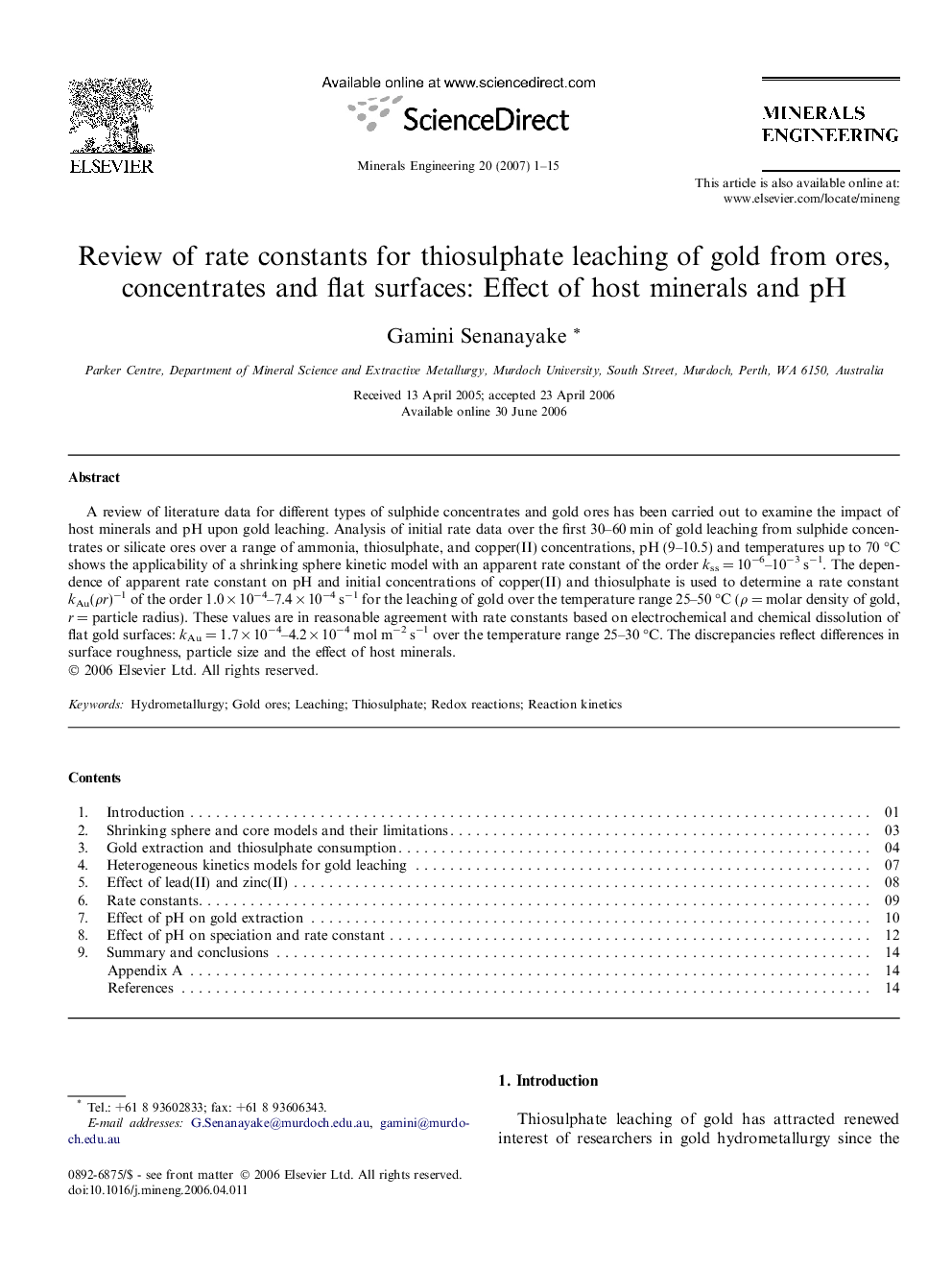| Article ID | Journal | Published Year | Pages | File Type |
|---|---|---|---|---|
| 234738 | Minerals Engineering | 2007 | 15 Pages |
A review of literature data for different types of sulphide concentrates and gold ores has been carried out to examine the impact of host minerals and pH upon gold leaching. Analysis of initial rate data over the first 30–60 min of gold leaching from sulphide concentrates or silicate ores over a range of ammonia, thiosulphate, and copper(II) concentrations, pH (9–10.5) and temperatures up to 70 °C shows the applicability of a shrinking sphere kinetic model with an apparent rate constant of the order kss = 10−6–10−3 s−1. The dependence of apparent rate constant on pH and initial concentrations of copper(II) and thiosulphate is used to determine a rate constant kAu(ρr)−1 of the order 1.0 × 10−4–7.4 × 10−4 s−1 for the leaching of gold over the temperature range 25–50 °C (ρ = molar density of gold, r = particle radius). These values are in reasonable agreement with rate constants based on electrochemical and chemical dissolution of flat gold surfaces: kAu = 1.7 × 10−4–4.2 × 10−4 mol m−2 s−1 over the temperature range 25–30 °C. The discrepancies reflect differences in surface roughness, particle size and the effect of host minerals.
